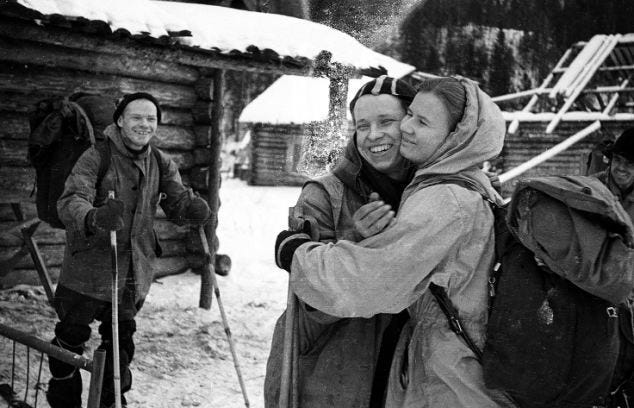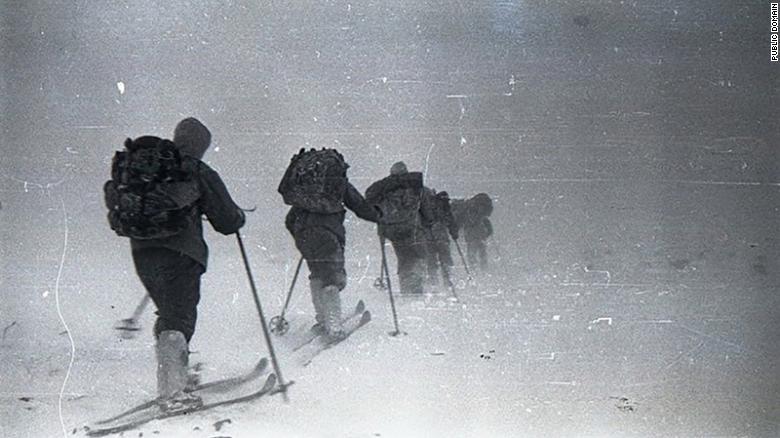Unravelling the mystery of the Dyatlov Pass
The Dyatlov Pass Incident is one of Russia’s most enduring mysteries – to this day, people still dispute what led to the deaths of nine hikers in the Ural Mountains. New research by Professor Johan Gaume at the Swiss Federal Institute of Technology Lausanne (EPFL) has re-examined the tragedy, attempting to address some of the holes in an existing theory that an avalanche was responsible for the deaths. This work, published in Communications Earth & Environment, employs advanced computer modelling to explore what may have happened 60 years ago.
————————————————————————————————————————————————————————————————————————————-
On 27 January 1959, a ten-person team consisting mostly of students from the Ural Polytechnic Institute, set off on a 14-day expedition to the Gora Otorten mountain. At that time of year, a route of this kind was classified Category III, the highest-risk category, with temperatures falling as low as -30°C, prompting one group member to return early. When the group’s expected return date to the departure point, the village of Vizhay, passed without any sign of them, a rescue team was dispatched.
On 26 February, the rescue team found the group’s tent, badly damaged, and all their belongings left behind some 20km south of the group’s destination. Further down the mountain, they found two bodies beneath an old cedar tree, clad only in socks and underwear. Three other bodies were found between the tree and the tent site, presumed to have succumbed to hypothermia, and the remaining four bodies were found two months later in a ravine beneath a thick layer of snow. Several of the deceased had serious injuries, such as skull and chest fractures.
The chest and skull injuries observed on some victims were not typical of avalanche victims
The Soviet authorities launched an investigation into what had happened, but closed it after just three months, concluding a “compelling natural force” had caused the death of the hikers. The dominant theory was that an avalanche had led to the incident, but authorities were unable to explain how it happened. Prof. Gaume says on the matter that, “first, the rescue team did not find any obvious evidence of an avalanche or its deposition. Then, the average angle of the slope above the tent site – less than 30° – was not steep enough for an avalanche.” He added, “if an avalanche occurred, it was triggered at least nine hours after the cut was made in the slope. And finally, the chest and skull injuries observed on some victims were not typical of avalanche victims.”
As a result of these questions, the Dyatlov Pass Incident (named after the group’s leader Igor Dyatlov) spawned a wide array of conspiracy theories. Among some of the proposed explanations are a military cover-up, a UFO sighting, radiation fallout from a secret weapons test, a clash with the indigenous Mansi people, and even an attack by an abominable snowman.
This was the backdrop against which Gaume began his study, working with Professor Alexander Purzin to comb through Russian archives on the incident. They spoke with experts and investigators and developed computer models to address the holes in the avalanche theory.
Gaume explains: “We used data on snow friction and local topography to prove that a small slab avalanche could occur on a gentle slope, leaving few traces behind. With the help of computer simulations, we showed that the impact of a snow slab can lead to injuries similar to those observed. And then, of course, there’s the time lag between the team cutting into the slope and the triggering of the event. That’s the main focus of our article. Previous investigators have been unable to explain how, in the absence of any snowfall that evening, an avalanche could have been triggered in the middle of the night. We had to come up with a new theory to explain it.”

One of the most important contributing factors to the incident was the presence of katabatic winds, or winds that carry down a slope under the force of gravity. The winds could have transported the snow, which would have accumulated uphill from the tent, to a specific feature of the terrain.
As Purzin explains: “If they hadn’t made a cut in the slope, nothing would have happened. That was the initial trigger, but that alone wouldn’t have been enough. The katabatic wind probably drifted the snow and allowed an extra load to build up slowly. At a certain point, a crack could have formed and propagated, causing the snow slab to release.” Purzin stresses: “We do not claim to have solved the Dyatlov Pass mystery, as no-one survived to tell the story. But we show the plausibility of the avalanche hypothesis.”
The models developed for Gaume and Purzin’s work – an analytical one for estimating the time required to trigger an avalanche, and a numerical one for estimating the effect of avalanches on the human body – will be used to better understand natural avalanches and the associated risks. Although some questions may remain unanswered, this work is the next step forward in potentially discovering what happened to those nine hikers.

Comments